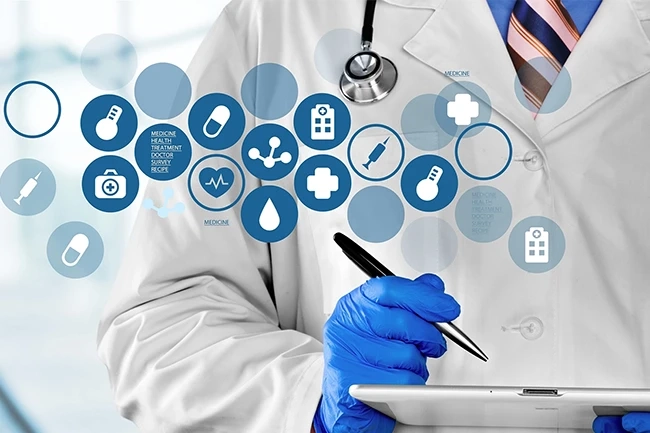The research done by McKinsey shows that the USA medical industry costs is at their high-end, 18% GDP- which is approximately USD 600 billion. Thus, by these figures, the data science applicability in such a huge industry is understandable. In addition to this, the survey results concluded by Poneman Institute stated that the healthcare area has almost 30% of global data. You can therefore view the rising period of big data professionals in healthcare applicability.
With Electronic Medical Records (EMRs), genetic information, primary sources, care management, clinical trials, databases, scientific articles, social media, and online research, the healthcare sector has big data to be worked upon. Almost 72% of patients look for medical information online, and many of them apply for a tool like Zocdoc to book appointments and speak to medical experts.
Another new area linked to data science in the healthcare sector is "Quantified health". It is related to data from patient's wearables (Pedometers, Fitbits, Muse headbands, and several others), blood pressure cuffs, glucometers, scales through smartphones (Apple's Health Kit, Google Fit, Samsung Health, and several others) inputting in EMRs.
The different areas where data science is applicable, that is, in drug manufacturing, patient care, better services as well as research, are provided below:
Drug discoveryPreventionDiagnosisTreatmentPost- care monitoringDrug discoveryThe total cost of bringing a medicine to market is approximately USD 2.6 billion and it takes a time period of 12 years. Data science education permits research scholars to stimulate the drug reaction with body proteins and different conditions and cell types. This increases the overall chances of the medicine to achieve FDA (Food and Drug Administration) approval and also enables testing on diverse people with illnesses. Ramsey, the chief data office at Glaxo Smith Klein, stated that they are trying to understand and implement how far artificial intelligence and computer simulation can fasten the drug discovery process to a period of fewer than two years.
Prevention
One of the major ways to deal with healthcare issues is to identify risks and recommend disease prevention plans. This should be done before a disease or disorder turns to be a major issue. This is done through tracking devices or wearables that help know the genetic makeup and historical patterns. Thus, due to data science applications, it turns easier to identify a health issue before it takes a giant form.
For example, Omada Health is known as a digital therapeutic firm that uses smart devices to create customized behavior plans and online coaching. This is done with the help of data science professionals to prevent chronic health issues, like hypertension, diabetes, and high cholesterol.
Diagnosis
The National Academies of Science, Engineering, and Medicine reported that approximately 12 million people in the USA are misdiagnosed. This can be, at the time, life-threatening. A BBC article states that errors in diagnosis can result in approximately 40,000 to 80,000 deaths annually. For example, data science usage in medical imaging is one of its most advanced applicability in health care. Computers can be taught to interpret x-rays, MRIs, mammography, and several other types of images. It can identify patterns in the data, identify artery stenosis, and tumors.
Treatment
Today, there is more data on individual patient characteristics. It is, thus, currently possible to deliver more correct prescriptions based on the personalized method. For example, initiatives like the NIH’s (National Institutes of Health) 1000 Genome Project, open-source research of regions of the genome linked with common illnesses like diabetes and coronary cardiac disease. Research scholars are making it possible to understand the complexity of human genes and explain why one medicine might not fix all patients when considering treatments and medications. Data science is also playing a vital role in helping in the emerging areas of gene therapy. This involves inserting the genetic material directly into the cells rather than the earlier method to compensate for abnormal genes.
Post-Care Monitoring
Cloudera software from Intel helps hospitals know whether there are chances that a patient will need hospitalization again in the next 30 days. It is based on socioeconomic status and EMR (Electronic Medical Records) data.
SeamlessMD has a multimodal system for post-operative care. It helped the Saint Peter’s Healthcare System in New Jersey to decrease by one day the average time period of admission post-surgery. This resulted in saving the money by more than $1,500 per person. The operated patients are checked daily on the mobile apps to collect data on pain severity. This data helped the care team know progress with time and have intelligent alerting methods on major problems.
Conclusion
Data science has made its mark in the progress of the healthcare system. The above examples with details present the power, scope, and applicability of data science knowledge in the medical field. Considering the investments made in this area, the future will see more development from the applicability of data science.


